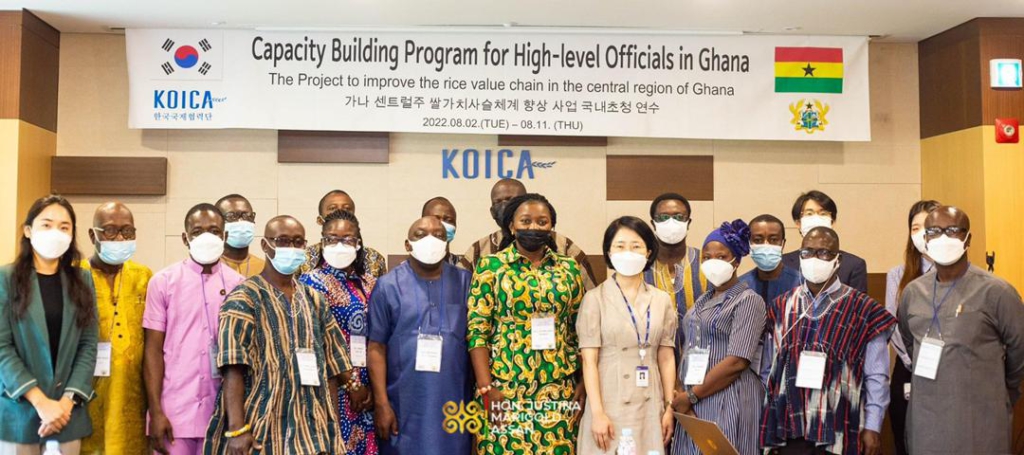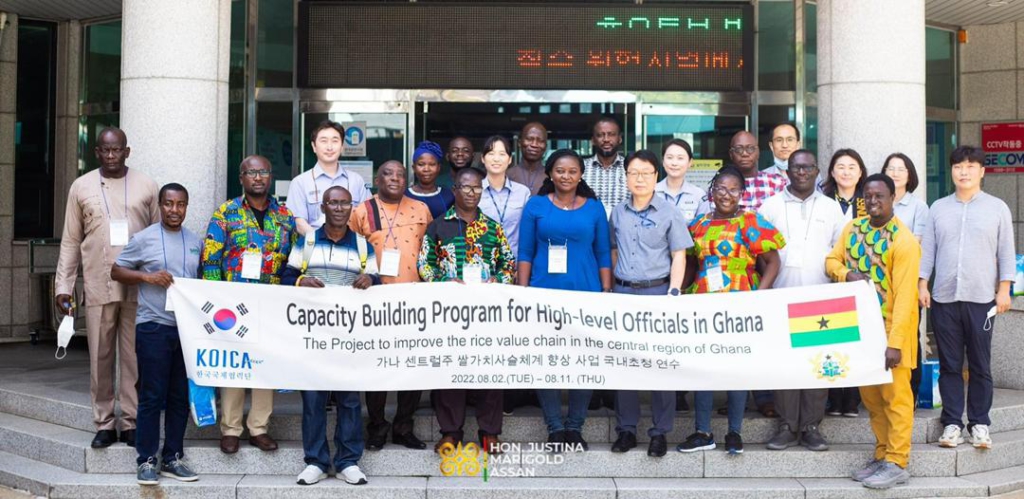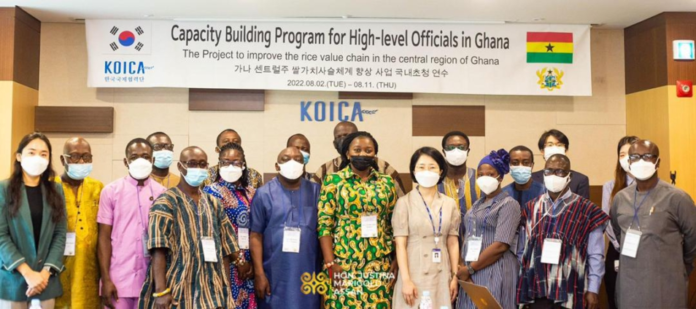The Central Regional Minister, Justina Marigold Assan, has said the region has the potential to produce enough rice to feed the country and boost the economy and livelihoods of farmers.
She said the Central Region was aiming to be a rice production hub in Ghana and also to produce rice seedlings for rice farmers in the country.
Justina Marigold Assan said this when she led a 14-member team from Ghana to Seoul, South Korea, to participate in a training on the Rice Value Chain Improvement Project (RVCIP) in the Central Region.

“Undoubtedly, the region has the capacity and prospects to produce rice to meet local demand and for export as well,” she said.
The 10-day training organized and sponsored by the Korea International Cooperation Agency (KOICA) is to let participants get first-hand information on how Korea was able to become rice-self-sufficient and also how they were able to eliminate rice exports, which has propelled their economy to be one of the best in the world.

The training is aimed at equipping the participants with the best practices in South Korea and exposing them to their success story in rice production at the level of self-sufficiency of the United States. It’s also to broaden and build the knowledge base of directors of agriculture and some top officials in rice production, to work towards improving the quality of life of rice farmers in the Central Region.
As part of the training, the participants would embark on a study trip to the Korea Rural Development Administration, the Korea Rice Production Complexes and related institutions, field trips to the Farmer Federation for Rice Value Chains, visits to quality control and marketing institutions/agencies, and study visits to agricultural mechanization rental service centers.

The Regional Minister revealed that the knowledge the participants would acquire would help to increase the quality and add value to rice production in the Central Region.
She said: “We will adopt the methods used by Korea to boost the rice industry and also strengthen the relationship between the region and KOICA.”
Mrs. Assan emphasized that KOICA is currently operating in five districts in the Central Region, namely: Gomoa East, Assin Fosu, Assin South, Assin North, and Twifo Atti-Morkwa, and has engaged the services of 514 farmers in the cultivation of rice.
She revealed that she was enthused about the rapid development of the country through the Saemaul-Undong movement, where citizens championed and spearheaded their own development.
The training, she revealed, has been an eye opener and that the Korean economy’s boom was nothing short of a miracle, which was created by a collective effort and the will of the people to help themselves in participating in the development process of the country.
“Korea was once poor in the 1950s due to wars, but they have been able to overcome all challenges and rise from grass to grace. I know we can also do it, “she said.

